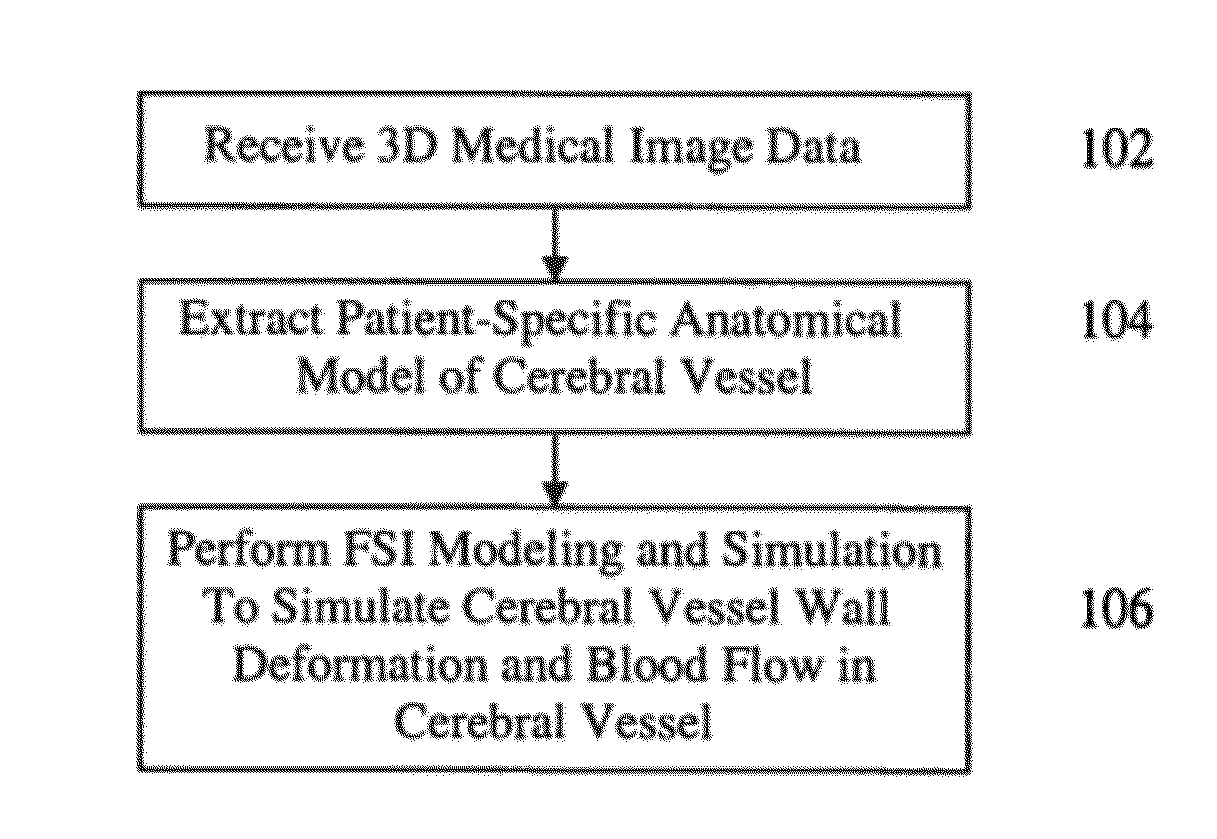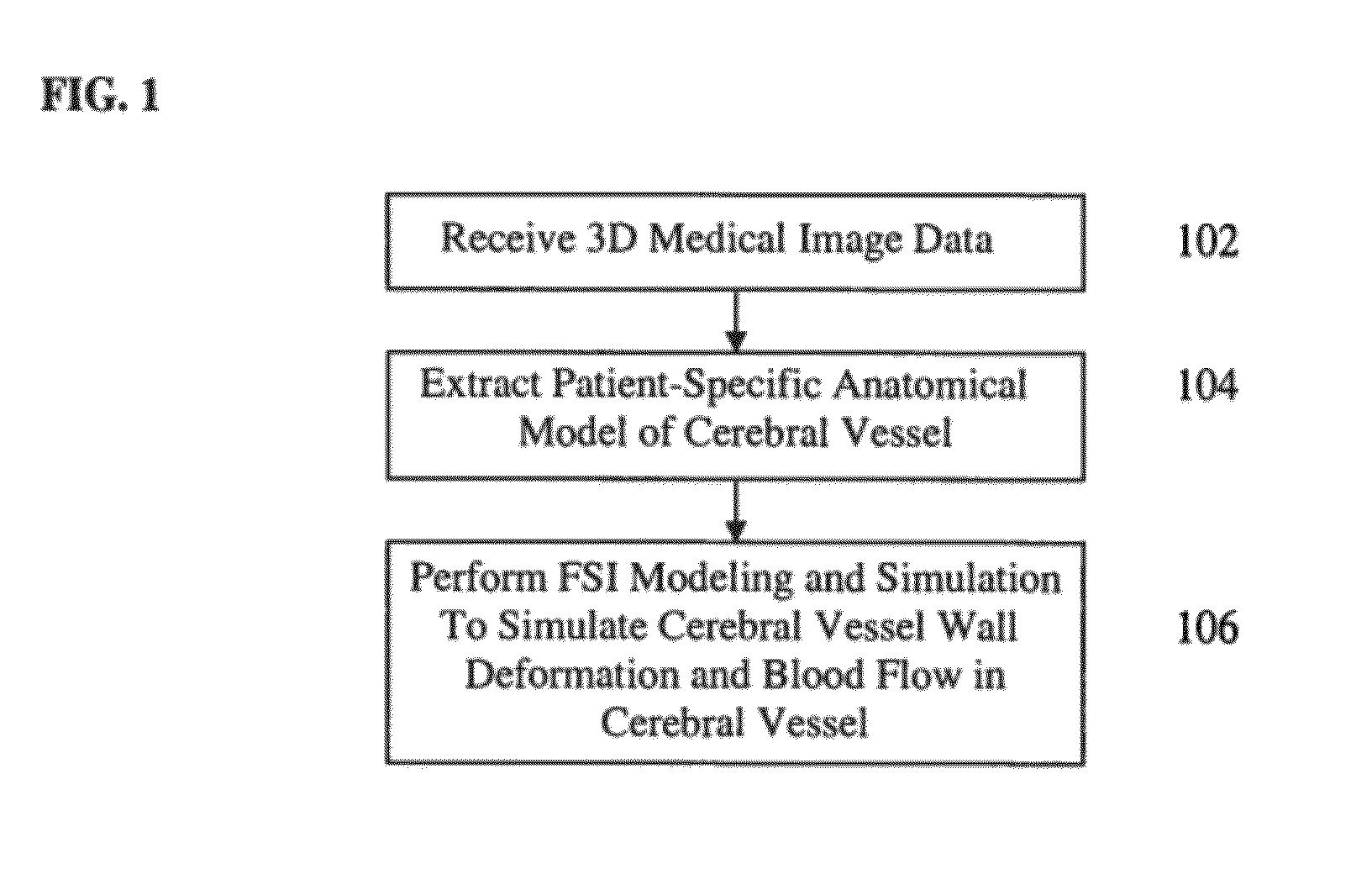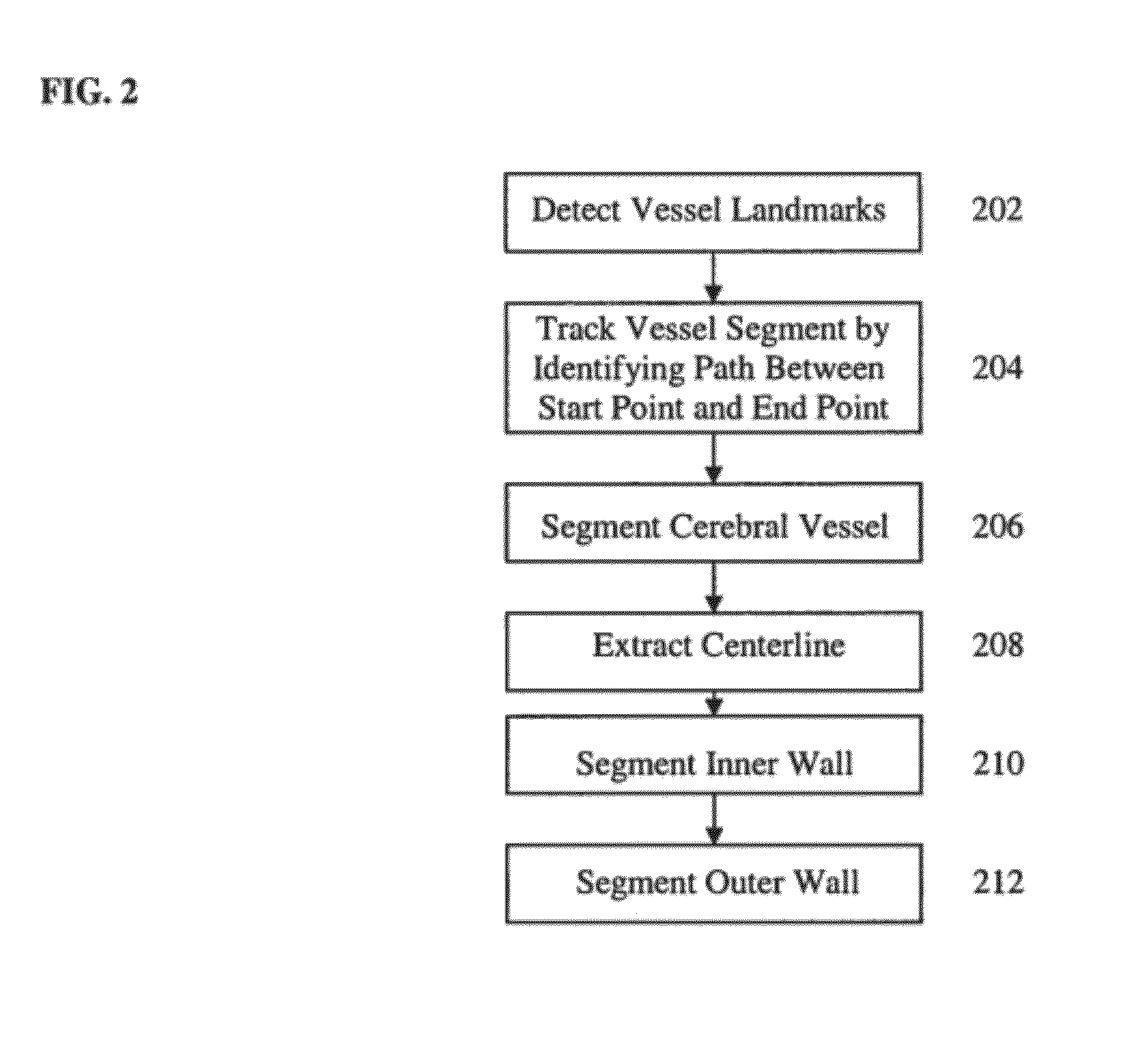Method and System for Patient-Specific Computational Modeling and Simulation for Coupled Hemodynamic Analysis of Cerebral Vessels
a computational modeling and simulation technology, applied in the field of hemodynamic analysis of cerebral vessels, can solve the problems of inability to analyze and support individual patients, and the use of computational mechanics based techniques is currently not used in routine clinical practi
- Summary
- Abstract
- Description
- Claims
- Application Information
AI Technical Summary
Benefits of technology
Problems solved by technology
Method used
Image
Examples
Embodiment Construction
[0017]The present invention relates to computational modeling and simulation for patient-specific coupled hemodynamic analysis in cerebral using patient-specific modeling of the cerebral vessels from sequences of volumetric medical image data, such as computed tomography (CT), rotational angiography, magnetic resonance imaging (MRI), and ultrasound data. In such sequences of volumetric data, also referred to herein as 4D image data or 4D images, each frame is a 3D image (volume). Embodiments of the present invention are described herein to give a visual understanding of the methods for generating a patient-specific cerebral vessel model and for computational modeling and simulation. A digital image is often composed of digital representations of one or more objects (or shapes). The digital representation of an object is often described herein in terms of identifying and manipulating the objects. Such manipulations are virtual manipulations accomplished in the memory or other circuit...
PUM
 Login to View More
Login to View More Abstract
Description
Claims
Application Information
 Login to View More
Login to View More - R&D
- Intellectual Property
- Life Sciences
- Materials
- Tech Scout
- Unparalleled Data Quality
- Higher Quality Content
- 60% Fewer Hallucinations
Browse by: Latest US Patents, China's latest patents, Technical Efficacy Thesaurus, Application Domain, Technology Topic, Popular Technical Reports.
© 2025 PatSnap. All rights reserved.Legal|Privacy policy|Modern Slavery Act Transparency Statement|Sitemap|About US| Contact US: help@patsnap.com



